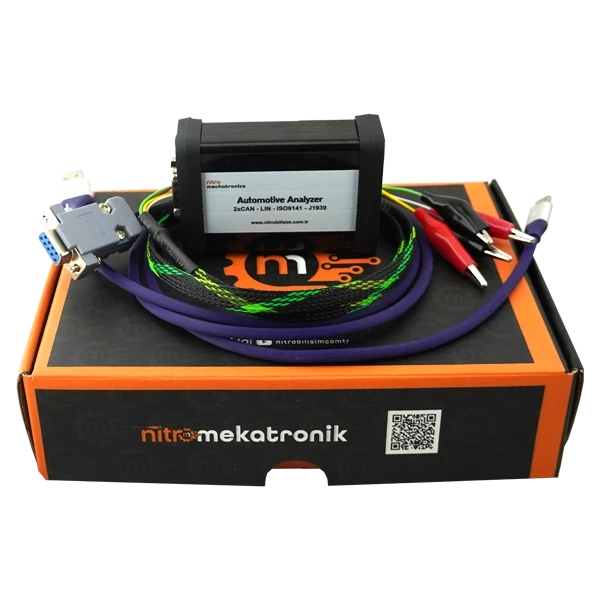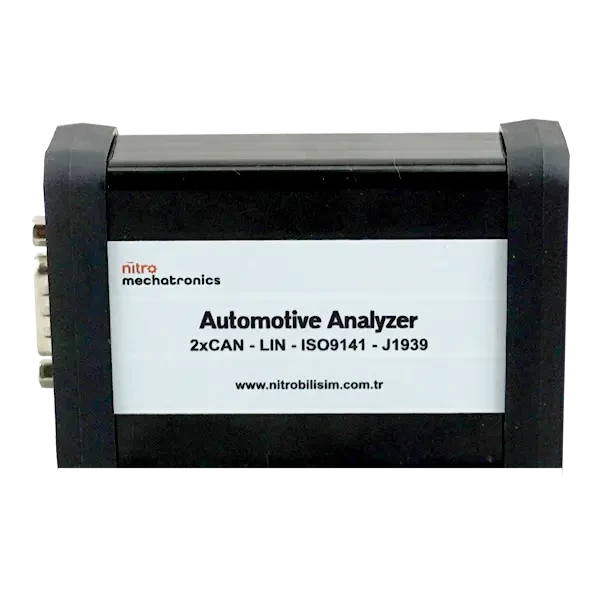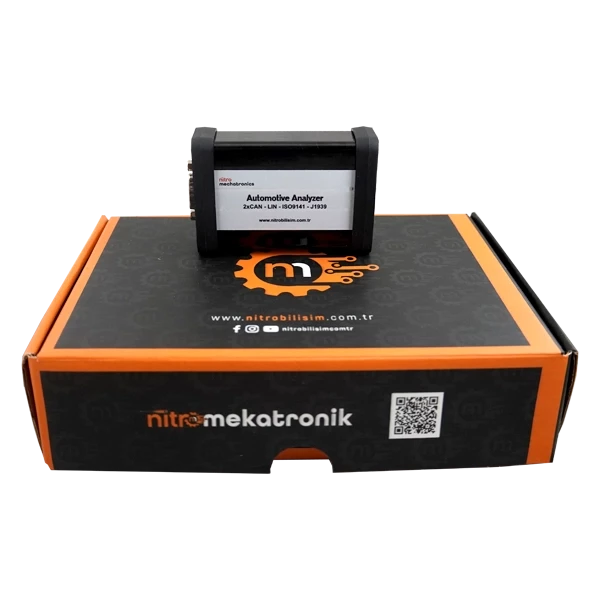CAN Analyzer
Isolated CAN Analyzer Nedir?
CAN hattı üzerindeki tesisat kablolarının benzerliği nedeniyle, data analizi yaparken hattın karıştırılması sorunu ortaya çıkabilir. Ancak, yanlışlıkla yüksek voltajlı veya statik elektriğe maruz kalan CAN-High veya CAN-Low hatları, analyzer cihazının arızalanmasına ve hatta bağlı olduğu bilgisayara önemli zararlar vermesine neden olabilir.
Detaylı Bilgi
Özellikler
Güvenli, izole devreli, gürültüsüz, doğru sonuçlar veren analiz cihazınız.
İzolasyon devresi
Isolated CAN Analyzer modelindeki izolasyon devresi, araç tesisatını ve USB hattını fiziksel olarak ayırarak sorunu çözer.
Zarar Engelleme
Cihazda oluşabilecek kısa devre, yüksek voltaj ve statik elektrik sorunlarında analyzer zarar görse bile bilgisayara zarar gelmez.
Elektriksel Gürültü
İzolasyon devresi, elektriksel gürültüyü ortadan kaldırarak daha doğru analiz sonuçları elde etmenizi sağlar.

CAN Protokolleri Nedir?
CAN protokolleri, CAN-Bus ağının daha verimli ve küresel olarak kullanılmasını sağlayan standartlardır. ISOBUS-ISO11783 tarım araçlarında, ISO-TP-ISO15765-2 otomotiv sektöründe, SAE J1939 otobüs ve kamyonlarda ve SAEJ2284 Araç içi kontrol ünitesi ağında yaygın olarak kullanılırlar. Bu protokoller, araç üzerindeki verilerin analiz edilmesini ve anlaşılır hale getirilmesini sağlar. Protokoller sayesinde, analiz edilen veriler çözümlenerek istenilen bilgiler alınabilir ve istenen kontrol ünitesine komutlar gönderilebilir.
Dual Channel CAN Analyzer Nedir?
Dual Channel, çift kanal anlamına gelir ve Dual Channel CAN Analyzer ile aynı anda 2 CAN hattını analiz edebilir ve veri gönderebilirsiniz. Bu özellik, aynı anda senkronize çalışan 2 farklı CAN hattını analiz etmenizi sağlar. İki hattın verilerini tek bir ekranda görüntüleyebilir ve doğru bir şekilde analiz edebilirsiniz. Bu sayede, eşzamanlı olarak çalışan farklı 2 CAN hattını doğru bir şekilde analiz etme imkanına sahip olursunuz.










